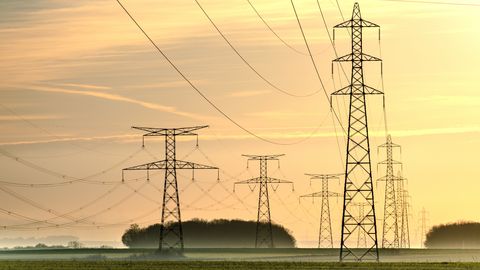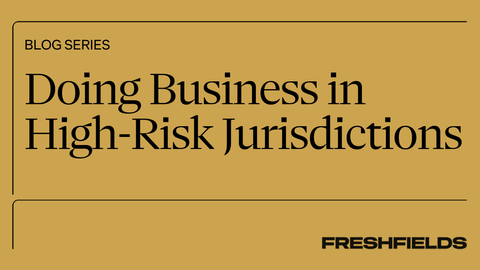The 2021 UN Climate Change Conference (COP26) was deemed by many to be a modest success, with some tangible positive progress achieved. We saw an increased focus on the role of finance in transitioning to a low carbon future, including new pledges for public climate funding from developed countries, alongside pledges made by members of the Glasgow Financial Alliance for Net Zero (GFANZ) to mobilise finance by aligning US$130 trillion of private finance to science-based net zero targets.
As world leaders gather in Egypt for the 2022 UN Climate Change Conference (COP27), the urgency of the need to transition to net zero remains unchanged - but the geo-political and macro-economic landscape has changed dramatically in the 12 months since COP26, with headwinds related to the war in Europe, the ensuing energy security crisis, food and commodity price rises, spiralling inflation and interest rates, and turbulent financial markets, potentially causing a loss of momentum for the movement to net zero generally, and in particular for sustainable finance. However, the sustainable finance market is dynamic, and we expect it to continue to evolve, innovate and adapt in response to these challenges.
Are we moving backwards, rather than forwards, with the sustainable finance agenda?
The public and private pledges to mobilise sustainable finance at COP26 were important statements of intent, but it remains to be seen whether these pledges will stand the test of time in a shifting geo-political and macro-economic landscape.
Cracks are already starting to show in the GFANZ alliance, with some participants citing concerns over legal risks and liabilities in relation to the phasing out of financing for fossil fuel assets. Climate politics are starting to come to the fore, with recent political push back in some US Republican led states against financial institutions that are pursuing environmentally conscious policies, either through divesting of polluting assets or by phasing out finance for carbon intensive businesses – the imminent US mid-terms can be expected to bring this movement further into the mainstream of US politics. The push back in the US centres around the premise that financial institutions that pursue such policies are compromising their fiduciary duties. Global financial institutions are having to tread a tightrope between their net zero pledges and the power wielded by those that have a vested interest in the continued success of fossil fuel industries.
The war in Ukraine and the related disruption to gas supplies from Russia to Europe has prompted a renewed focus on energy security in Europe and the UK. Some argue that this is to the detriment of the net zero agenda, because the need to maintain stable yet affordable energy supplies in the short-term has resulted in greater use of coal and the re-commissioning of coal-fired power plants as interim measures. In the UK, the government has also announced a lifting of the ban on shale gas fracking, and an intention to increase domestic energy supply by accelerating North Sea oil and gas production. While this will mean a short-term increase in the role of fossil fuels in the UK energy mix, the hope is that the energy crisis will over time accelerate much needed investment in renewable energy assets. However, some of the recent emergency tax measures announced by the European Union may have the unintended consequence of discouraging, rather than encouraging, private investment in renewable and low carbon energy generation. These emergency measures (as outlined in our blog: A windfall tax by any other name: the European Commission’s legislative proposal to address rising energy prices) include the EU cap on market revenues for the generation of electricity, which hits renewables. It is also anticipated that the UK may set out plans for a similar temporary cap on renewable energy producers. These caps may have the unwanted effect of discouraging greater investment in the renewable energy sector.
Macro-economics and the just transition
We have for many years benefitted from an ultra-low (and in some cases negative) interest rate environment. Since the 2008 global financial crisis, the US Federal Reserve, the Bank of England, and the European Central Bank, amongst others, have deployed wave after wave of economic stimulus via quantitative easing. That stimulus left global interest rates at ultra-low levels for years. It was a good time to borrow money, in both public and private sectors.
2022 heralds a completely different macro-economic environment. Central banks have shifted gears from quantitative easing to quantitative tightening. All of the public and private debt that was borrowed during the ultra-low interest rate era will eventually need to be paid down or refinanced. Any refinancing will be much more expensive, given the rapid rise in interest rates across all major economies. This is amplified by the impacts of rampant inflation across the global economy.
While rising interest rates will be a universal headwind, it will inevitably have the most impact on developing countries. As financial conditions become more stressed, the cost of finance for those countries will rise. Rising inflation, rapid interest rate rises by the US Federal Reserve, and the consequential strengthening of the US dollar vis-à-vis other currencies will have a knock-on impact on the ability of developing countries to pay for essentials that are usually traded in US dollars, such as food, commodities, and energy. This has triggered a spiralling debt cycle for those countries, resulting in unsustainable debt burdens that will only get worse over time.
Those countries most impacted by the effects of climate change should be empowered to mobilise sustainable finance to build up their climate resilience – but sustainable finance also has to be affordable finance. As their debt becomes more expensive to service, developing countries may face a hard choice between paying down conventional debt to international investors, or potentially defaulting on expensive debt in order to finance climate mitigation and adaptation.
Advocates of climate justice argue that the industrialisation of developed countries has generated the climate crisis through decades of intensive fossil fuel use (and associated climate emissions), while developing countries that are more vulnerable to the impacts of climate change are disproportionately paying the price. There have been calls for environmental reparations and/or financial aid from industrialised countries to developing countries. Looking ahead, we expect discussions at COP27 to focus on the need for a greater share of climate finance to be provided in the form of non-repayable grants or in the form of other financing structures, such as “debt for climate swaps”, where a country’s debt is reduced in exchange for spending or policy commitments on climate change initiatives. Meanwhile, existing creditors to developing countries that are most severely impacted by climate change may need to consider debt relief or restructurings as longer-term solutions, in order to enable those countries to respond to, and recover from, climate-related events.
What does the current market for sustainable finance products look like?
At first glance, it may seem like sustainable finance products, such as use of proceeds bonds, sustainability-linked bonds, or sustainability-linked loans, are falling out of favour. S&P has revised its 2022 forecast for the issuance of ESG-labelled bonds to US$865 billion from an anticipated US$1.5 trillion in February 2022. However, this reflects weaker issuance trends in the global bond markets in 2022, rather than a market-wide loss of confidence in ESG-labelled bonds or sustainable finance products more generally.
Financing the energy transition is particularly relevant for the emerging markets, and the capital markets have a key role to play in this. While global issuance of ESG-labelled bonds has declined in 2022, in line with overall bond issuance trends, research by Moody’s indicates that the market for ESG-labelled bonds by emerging market issuers continues to flourish. In 2020, Egypt became the first country in the Middle East and North Africa to issue a sovereign green bond, setting an example for other countries in the emerging markets. We expect emerging market issuers to eventually diversify away from the green bond asset class, to embrace the flexibility embedded within sustainability-linked bonds.
With the ongoing turbulence in financial markets and the associated volatility in the capital markets, in our opinion sustainability-linked loans will remain an attractive asset class for borrowers seeking to finance a transition to net zero.
We think that the outlook for sustainable finance remains positive, and we expect an overall pick-up in sustainable finance volumes as economic uncertainty starts to abate.
Innovation in sustainable finance
The market for sustainable finance continues to adapt, evolve, and innovate year-on-year, and this is key for the mainstream adoption of sustainable finance, especially in light of meeting the challenges of the macro-economic forces discussed above. Recent developments include:
- Innovation in the sustainable finance product offering, such as sustainability-linked derivatives. See our blogs: Sustainability-linked Derivatives – an introduction; Sustainability-linked derivatives and KPIs – what are the challenges; and Sustainability-linked Derivatives – regulation.
- Evolution in market-based principles such as the Green Bond Principles, to cover a broader spectrum of sustainable finance products. See our recent blogs: ICMA clarifies use of ESG bonds for securitisation in new publications; ESG bonds – recent ICMA and FCA publications; and How to negotiate Sustainability-Linked Loans: The Loan Market Association issues further articles and guidance.
- An increasing global and regional focus on sustainability and climate-related disclosures, to facilitate investor assessment of enterprise value. See our recent blogs: Hope for a new paradigm? Progress towards a global baseline of sustainability disclosure standards and ESG disclosure requirements - are you ready for the EU corporate sustainability reporting directive?
- The “greening” of monetary policy by central banks such as the European Central Bank and the Bank of England, by incorporating climate change considerations into corporate bond purchases - effectively decarbonising their corporate bond holdings by tilting towards issuers with better climate performance.
Where next for sustainable finance?
We believe that sustainable finance has a key role to play in the transition to net zero. But it would be naïve to ignore the risk that macro-economic and geo-political headwinds could divert public and private attention away from the movement towards net zero and thus harm, at least in the short term, the development of sustainable finance. As governments look to navigate recession and stimulate economic growth and productivity, it is vital that they consider how the transition to net zero, with sustainable finance a key facilitator and financial tool for change, as well as a just transition, can support those growth objectives.
There is also a role for the private sector here, by using sustainable finance to boost private investment in innovative net zero technologies, sustainable infrastructure, and climate resilience.
In the current economic climate, private sector organisations will also need to employ defensive strategies when navigating volatile financial markets. Bolstering lines of liquidity will be front of mind right now for many business leaders - and this presents a strategic opportunity for many organisations to switch from conventional finance to sustainable finance in their transition to net zero.



/Passle/581a17a93d947604e43db2f0/MediaLibrary/Images/2025-10-21-10-30-43-502-68f760d3a94b3b874acc7f85.png)

